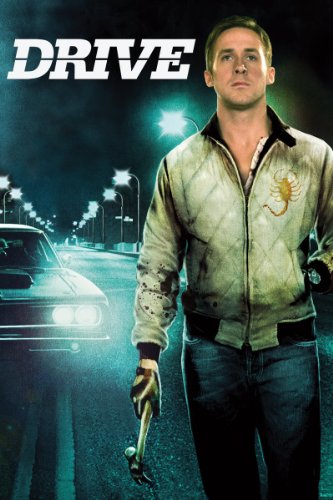All Nonfiction
- Bullying
- Books
- Academic
- Author Interviews
- Celebrity interviews
- College Articles
- College Essays
- Educator of the Year
- Heroes
- Interviews
- Memoir
- Personal Experience
- Sports
- Travel & Culture
All Opinions
- Bullying
- Current Events / Politics
- Discrimination
- Drugs / Alcohol / Smoking
- Entertainment / Celebrities
- Environment
- Love / Relationships
- Movies / Music / TV
- Pop Culture / Trends
- School / College
- Social Issues / Civics
- Spirituality / Religion
- Sports / Hobbies
All Hot Topics
- Bullying
- Community Service
- Environment
- Health
- Letters to the Editor
- Pride & Prejudice
- What Matters
- Back
Summer Guide
- Program Links
- Program Reviews
- Back
College Guide
- College Links
- College Reviews
- College Essays
- College Articles
- Back
Drive
James Bond flies away on jet-packs, Rambo rips people’s throats out, John McClane fires one-liners as often as he fires bullets, but The Driver—well, he just drives. Stoically cool in his scorpion-emblazoned silver jacket and leather gloves, chewing on what seems to be a seemingly never-ending supply of toothpicks, he is the best at what he does. Give him a time and a place and he will be there, ready to provide his getaway services to whomever awaits him. He does not carry a gun, he does not help with the job, and he barely even talks; all he does is drive.
The Driver is the hero of the new movie “Drive” by Danish director Nicolas Winding Refn, who has done something unusual for an action movie; the action, while glorious, comes second to the characters. The movie follows on-the-go nameless movie stuntman (Ryan Gosling) who moonlights as a getaway driver (or vice versa, if you will) and spends his time between jobs alone in his apartment. While reserved, he does not prove emotionless, as he quickly falls in love with his next-door neighbor, single-mom Irene (Carey Mulligan), whose husband (Oscar Isaac) comes home from prison shortly after they fall for each other. Things get messy, as the husband, Standard, is wanted by the mafia, and The Driver is soon forced to work a pawn-shop hold-up in order to protect Irene and her son. When the job goes bad, the bullets start flying and the driver finds himself up against Bernie Rose (Albert Brooks), a kind-hearted Jewish mobster with a vicious side who will not stop until The Driver is dead.
Cool may be one of the only words suitable to describe Nicolas Winding Refn's film, which oozes style and class in its European art-house aesthetic. The effect is enhanced by Refn's subtle touches: in-between scenes the camera swoons above a glamourless Los Angeles; the action is always brief and fleeting, but memorably brutal and intensely satisfying when it appears; pink credit titles and a modern-day synth-pop score give the film a soft and almost-tender quality. While by no means slow, the film takes its time for an action movie, dedicating almost the entire first half to establishing the world The Driver inhabits and the love that begins to grow between him and Irene.
Refn idolizes every frame, lighting shots with an impeccable finesse that guarantees dozens of images burned into your retina by the time the credits roll. A particularly notable scene portrays the tense stand-off between The Driver and an armed assailant in the middle of an elevator, Irene caught desperately between the two. Refn toys with the lighting, as well as our emotions, romantically swelling the atmosphere for a short tender kiss between The Driver and Irene, and then quickly dropping the brief respite to treat us to one insanely violent ballet.
The film belongs to The Driver, whose role Ryan Gosling fills perfectly. Gosling takes a man with no name and little to say and turns him into a character for whom the audience not only roots, but also cares. No matter who speaks, The Driver rarely responds, choosing instead to hide behind a loonish smile which, thanks to Gosling, manages to express much more than his words ever could. When he does talk, he never says any more than is needed, allowing other characters to fill in the conversation. The ensemble cast is surprisingly strong, with Albert Brooks and Carey Mulligan delivering strong smaller performances that rival Gosling’s. Brooks gives an especially fantastic performance, going against type to play a bad guy, yet winding up not far from the whiney nice-guy character that he has perfected over the years in other movies.
The neo-myth of the motorist has been explored through cinema almost as frequently as the cowboy, but “Drive” manages to separate itself from the pack. While lacking a single climactic car chase sequence to rival the likes of genre classics such as “Bullit” and “The French Connection,” the movie goes further than its past contenders by modernly re-examining the genre as a whole. A violent and yet touching exploration of an American folklore archetype, “Drive” is a superbly stunning movie thanks to the skillful work of Nicolas Winding Refn and Ryan Gosling.
Similar Articles
JOIN THE DISCUSSION
This article has 0 comments.

